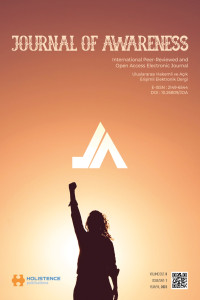Sarnıç temalı kültür rotası oluşturulması; İstanbul Tarihi Yarımadası Örneği
Cistern-themed cultural route; The case of Istanbul Historical Peninsula
Author(s): Mustafa Yağız Fırat, Adem Erdem ERBAŞSubject(s): Museology & Heritage Studies, Applied Geography
Published by: Rating Academy
Keywords: Heritage Conservation; Water Heritage; Cistern; Cultural Route; GIS;
Summary/Abstract: Today, when natural and cultural heritage elements are exposed to negative effects, transferring cultural heritage elements to future generations in a healthy way, both locally and globally, is an important issue in the urban planning agenda. For this reason, the concept of cultural route emerges as an important planning tool in order to protect cultural heritage elements in a sustainable way and to transfer them to future generations. The goal of creating cultural heritage within a route setup is important both for the conservation of cultural heritage elements and for the formation of an alternative and sustainable tourism movement. Istanbul contains heritage items from various historical periods. For this reason, in this city, which is rich in cultural heritage elements, the construction of a cultural route has an important aspect both for the conservation of the heritage and for the transfer of the heritage to future generations. Since no cultural route has been constructed in the Historical Peninsula until now and the routes organized have the characteristics of a tour route, it is of great importance to look at the subject from the perspective of creating a cultural route. Istanbul Historical Peninsula is an area rich in heritage items belonging to various periods, especially for fresh water supply. In this study, open and closed cisterns, which are among the water heritage elements in the Istanbul Historic Peninsula, were examined and evaluated within the scope of a field study based on GIS analyses in terms of their potential to create a cultural route. It is aimed to increase the visibility of these water heritage elements, whose visibility has decreased in daily life, in spatial planning and to transfer them to future generations by protecting them in a sustainable way. As a result, the most important finding of the research is that the open and closed cisterns in the Historical Peninsula of Istanbul can be evaluated within the scope of a cultural route for water heritage. Accordingly, the creation of a cistern-themed cultural route will create an opportunity to increase the visibility of water heritage elements in a sustainable way and to transfer them to future generations, both in heritage conservation studies and spatial planning studies.
Journal: Journal of Awareness (JoA)
- Issue Year: 8/2023
- Issue No: 1
- Page Range: 89-103
- Page Count: 15
- Language: Turkish

